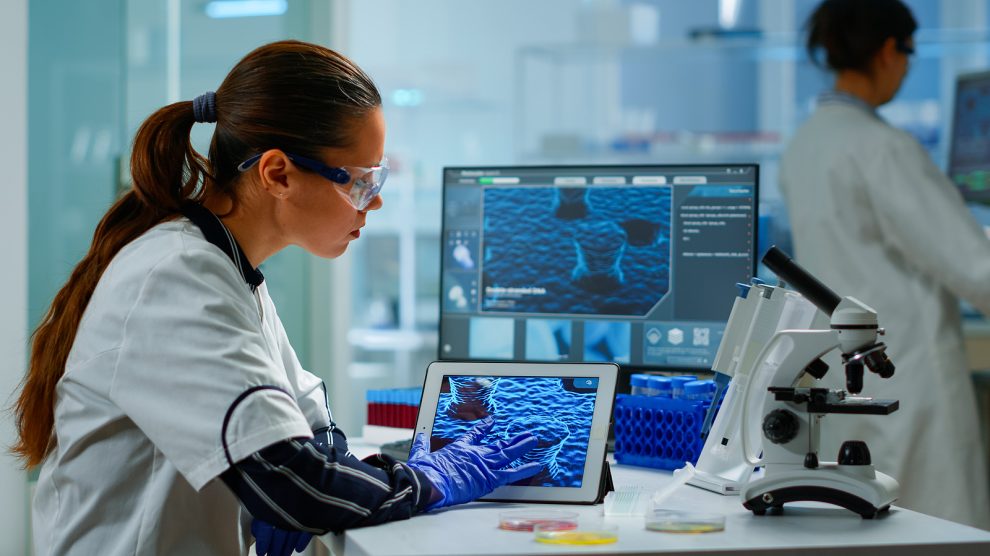To ensure that emerging Europe’s best innovations make it to market, great ideas need support, networks, systems and access to skills. Fortunately, several organisations and initiatives, such as the EIT Regional Innovation Scheme, are making that happen.
The new European Innovation Agenda, adopted in July, aims to position Europe at the forefront of the new wave of deep tech innovation and start-ups.
It seeks to help Europe develop new technologies to address the most pressing societal challenges, and then bring them to market.
- Innovation must be the cornerstone of future health care
- Thinking global from the get go: Boosting healthtech in Europe’s emerging regions
- Warsaw Health Innovation Hub set make a ‘Polish Medical Valley’ a reality
The EU sees Europe as a place where the best talent works hand in hand with the best companies and where deep tech innovation thrives and creates breakthrough innovative solutions across the continent.
“We need to boost our innovation ecosystems to develop human-centered technologies. This new Innovation Agenda builds on the significant work done already on innovation in recent years and will help us accelerate our digital and green transition,” believes Margrethe Vestager, the EU’s commissioner for digitalisation.
A key part of the EU’s innovation toolkit is the European Institute of Innovation and Technology (EIT), whose Knowledge and Innovation Communities (KICs) place great emphasis on addressing regional imbalances, and looking at increasing the entrepreneurial and innovation capacity of higher education institutions.
As Europe’s largest innovation ecosystem, EIT brings together over 3,400 partners across more than 70 innovation hubs in Europe and beyond, and is the only innovation body with a presence in every EU country.
At INNOVEIT Warsaw last month, part of a series of events organised by EIT across Europe, the focus was on the development of innovative regions of tomorrow through its EIT Regional Innovation Scheme.
Dora Marosvolgyi is the director of EIT Community Projects at EIT Health InnoStars, and says that in her experience of working with early-stage teams, usually made up of researchers, what they need help with is bringing their ideas to market.
She points to the EIT Jumpstarter programme as a way of achieving that. “Six EIT communities teamed up to create Jumpstarter,” she says. “EIT Health, RawMaterials, Food, InnoEnergy, Manufacturing and Urban Mobility. The programme helps innovators and entrepreneurs build a viable business model around their innovative product or service idea, and then validate it.”
“It helps bridge to the gap to the US, Israel, Western Europe. It teaches innovators about entrepreneurship.”
Andrzej Dybczyński, director of the Polish Centre for Technology Development and Łukasiewicz Research Network, says that even when all the ingredients to bring innovation to the table exist, they don’t always get mixed in the right way.
“It’s why we need a system that brings all of the ingredients together,” he says. “There are five elements: academia, research institutions, start-ups, venture capital, business. With the system we currently have the problem is combining them.”
Tuan Trinh, director of EIT Digital’s Budapest Node, agrees that a problem in Europe is bringing great innovation and technology to market. “This is what we need to be teaching our students,” she says.
Trinh adds that the environment, or ecosystem, is also crucial. “When a company grows, is the environment mature enough for it to stay? Is there enough capital, enough talent? A one billion US dollars company needs a different level of support to a 100,000 US dollars company.”
A commitment to grow
EIT Jumpstarter is certainly a great place for innovations to begin their path to market.
Marosvolgyi says that when selecting teams to take part, what she looks at are the people behind them.
“Of course, they should bring an idea which is innovative and that fits our thematic sectors. But what we also look for is a commitment to grow,” she says.
“Pure scientists often lack the skills to run a business and may be searching for an entrepreneurial co-founder, and here we can help them. But they have to be committed to unlocking their potential, to starting a company – then we can connect them with the international networks that we have.”
Andrzej Dybczyński feels that it’s important to ensure that the people can do what they do best, and that here the power of networks is crucial.
“Let a researcher be a brilliant researcher; we don’t need him or her to be the Chief Financial Officer. We don’t need him or her to do marketing. What we should do is surround that person with the skills he or she needs.”
Dora Marosvolgyi says that an initiative such as the Warsaw Innovation Hub, launched last year, is just that, “a knowledge triangle” that brings together academia, industry and researchers. “And the role of EIT is to act as a facilitator,” she adds.
“We are connecting the dots, supporting innovation, supporting start-ups, facilitating collaboration with wider international networks that can access funding.”

Success does not happen by chance
Tuan Trinh agrees that collaboration is a key element, and points to Estonia – one of emerging Europe’s greatest success stories when it comes to bringing technology and innovation to market – as an example of “an open and supportive environment”.
“[Estonia’s success] has not come about by chance,” she points out.
Andrzej Dybczyński meanwhile suggests that sometimes, all that’s needed is the removal of “roadblocks”, such as overly burdensome regulation.
“We should think about how we can remove these roadblocks that the most creative individuals on this planet, be it in this region or elsewhere, are facing. It’s not always about fostering innovation, the innovation is there.”
EIT’s role in bringing this about is already impressive. Over the past decade, it has supported more than 5,600 ventures, helped create over 1,670 products and services, helped generate more than 17,400 jobs, and helped start-ups raise over six billion euros in external investment.
Now, as Europe implements its new innovation agenda, EIT’s role is set to become even more central to the continent’s pursuit of excellence.
Unlike many news and information platforms, Emerging Europe is free to read, and always will be. There is no paywall here. We are independent, not affiliated with nor representing any political party or business organisation. We want the very best for emerging Europe, nothing more, nothing less. Your support will help us continue to spread the word about this amazing region.
You can contribute here. Thank you.







Add Comment